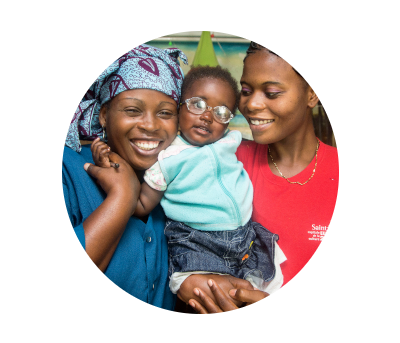BREAKING THE VICIOUS CIRCLE
Poverty is both cause and consequence of a visual impairment. When a person lives in poverty, access to eye care becomes hampered due to, among others, a lack of financial resources and adequate information. However, 90% of all forms of vision loss are avoidable or can be treated. In Light for the World’s field of action, one of the main causes of blindness consists of untreated cataract. Yet, this eye disease is curable with a relatively simple procedure. This is why we speak of avoidable blindness.
In turn, experiencing a visual impairment is a primary cause of poverty. Persons with disabilities face stigma, discrimination and marginalisation in all facets of life. As a result, they are often excluded from the labour market and education, leading to a loss of income. This complicates access to healthcare. The link becomes clear: avoidable blindness and poverty reinforce each other.
With the support of local partners, experts, donors and business partners, Light for the World has been breaking this vicious circle for more than 25 years. We improve access to health care and help people with a visual impairment to integrate into society. Together we offer them a better future.
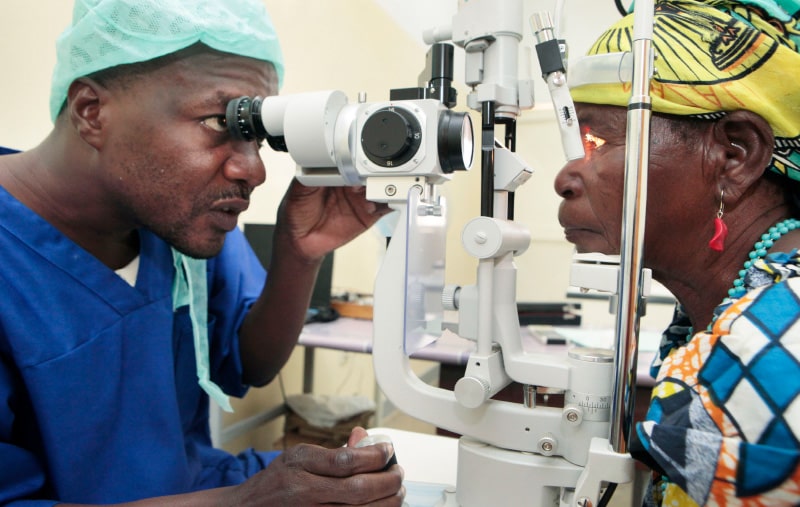
EYE CARE FOR ALL
A global approach
- Detection: community workers are mobilised to detect children
and adults with eye conditions as early as possible. We engage
in primary healthcare, organise mobile clinics and raise awareness about eye care and blindness in the field. - Treatment: individuals with eye diseases are treated at the eye clinics by means of surgery, medicine and visual therapy.
- Aftercare: following treatment, proper aftercare and follow-up is provided.
- Social services: each partner clinic provides financial support
to patients who need it so that everyone can afford treatment. - Optical shop: each partner clinic is also equipped with an optical shop offering quality glasses at affordable prices.
A sustainable approach
- Training & equipment: Light for the World organises intensive training for local medical and administrative staff, provides modern infrastructure and distributes high quality medical equipment.
- Social franchise: Light for the World applies a social business
model to eye clinics. The procedures for the start-up and management of new eye clinics are established in a blueprint.
By continuously applying this standard model, expertise and know-how are exchanged and the clinics can eventually
detach from Light for the World’s support. - Advocacy: finally, Light for the World is also committed
to developing and supporting eye health policies and plans in its field of action.
EVERY CHILD HAS A RIGHT TO EDUCATION
About 9 million children with visual impairment live in sub-Saharan Africa. In countries with high poverty rates, it is estimated that only 10% of children with disabilities have access to education. Light for the World supports education programmes in Congo, Rwanda and Tanzania for children and young people who are blind or visually impaired.
Our education programmes focusses on inclusive education. Visual therapists optimise the residual vision of children with a visual impairment. Those children also receive the necessary infrastructure and adapted tools such as magnifying glasses. Children who are blind receive special training for a number of years, for instance in braille.
Subsequently, we try to integrate most of these children in their neighbourhood school where they attend classes with their sighted peers. Specialised teachers mentor students and their parents, as well as their teachers. All these measures will make their integration easier and put an end the stigma of their disability.
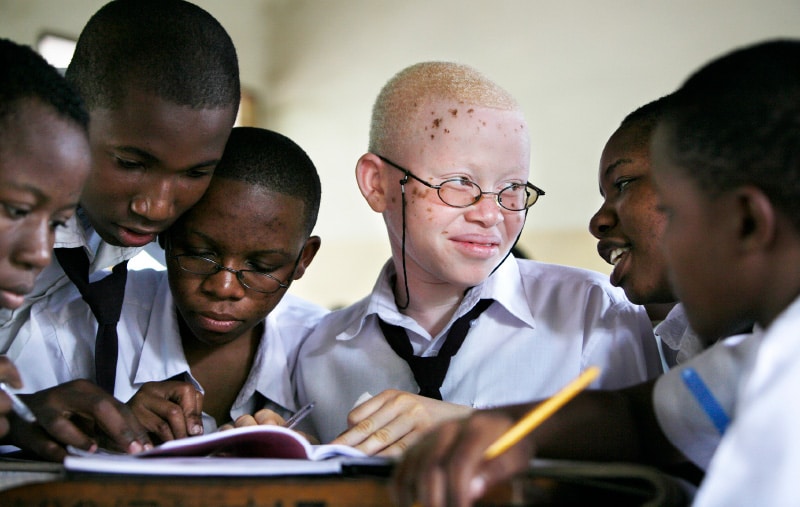

LIGHT FOR THE WORLD-ACADEMY
2024 marks the beginning of the LftW-B Academy. The Academy’s activities will be hosted at our five partner eye hospitals in DR Congo. This year, the following training sessions are planned:
- Phaco Eye Surgery Training: Conducted by Dr. Janvier Kilangalanga in Kananga and Dr. Edith Mukuanseke in Kolwezi.
- Finance Management Training: Delivered by a team of experts at Ste Yvonne, Lubumbashi, as part of the Light for the World Belgium eye hospital management blueprint (To be consulted via this link. Please remember to use the following password: “LFTWBelgium!”).
- Development of the LftW-B Standardised Eye Hospital Management Blueprint: The second version will be developed in Lubumbashi in 2024 and implemented in the other four partner hospitals in 2025.
- International Training in Planning and Management of Eye Hospitals: Subscriptions will open in 2024, with the training coordinated by Light for the World Belgium Impact Director Geert Vanneste, starting in January 2025.
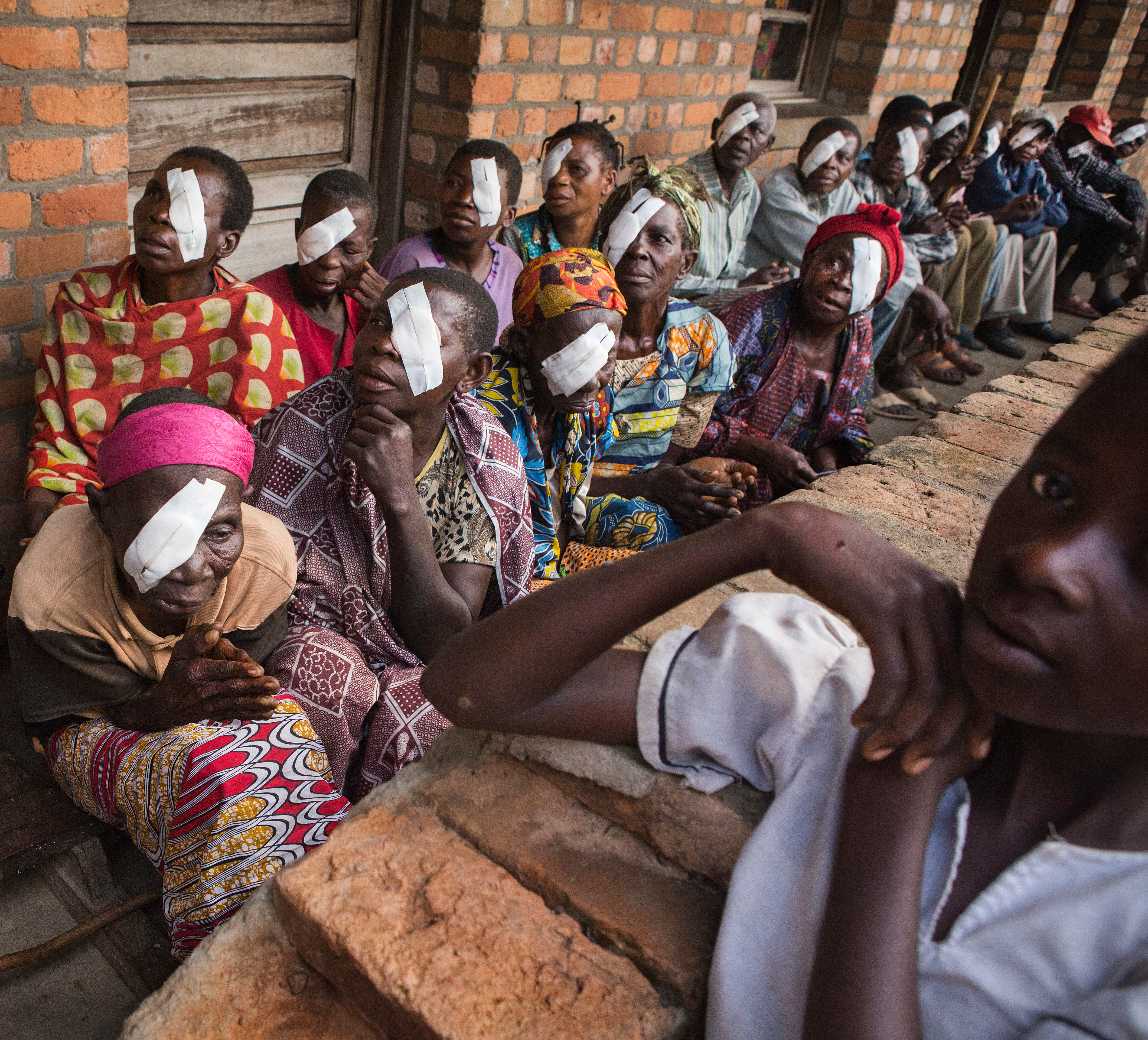
OUR PROJECTS
DR Congo:
- Sainte-Yvonne Eye Clinic in Lubumbashi
- Inclusive education programme in Lubumbashi
- Nuru Institute for blind and visually impaired children in Lubumbashi
- Saint-Joseph Eye Clinic in Likasi
- Saint-Raphaël Eye Clinic in Mbuji-Mayi
- Mwangaza Eye Clinic in Kolwezi
- Mulami Muimpe Eye Clinic in Kananga
Rwanda:
- Kabgayi Eye Unit in Gitarama
- Inclusive education programme
- HVP Gatagara School for blind and visually impaired children in Rwamagana
Tanzania:
- CCBRT Eye Unit, Comprehensive Community Based Rehabilitation Tanzania in Dar es Salam
- KCMC Eye Unit, Kilimanjaro Christian Medical Centre in Moshi
- SFRH Eye Unit, Saint Francis Referral Hospital in Ifakara
- SJMH Eye Unit, Saint Joseph’s Mission Hospital Peramiho in Songea
- BMH Eye Unit, Benjamin Mkapa Hospital in Dodoma
- MRRH Eye Unit, Morogoro Regional Referral Hospital in Morogoro
- Inclusive education programme
- Early detection programme
OUR NUMBERS
ANNUAL RESULTS 2023

12
eye clinics

280960
consultations

22198
surgeries

12633
cataract surgeries

30323
pairs of glasses

1618
children go to school
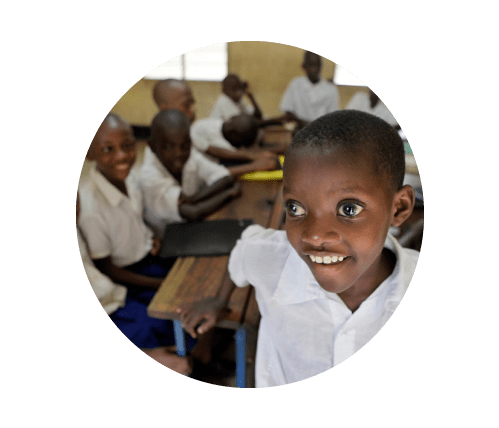
Give access to education
With 11 euro a child with a visual impairment like Agnes can go to school for a month.
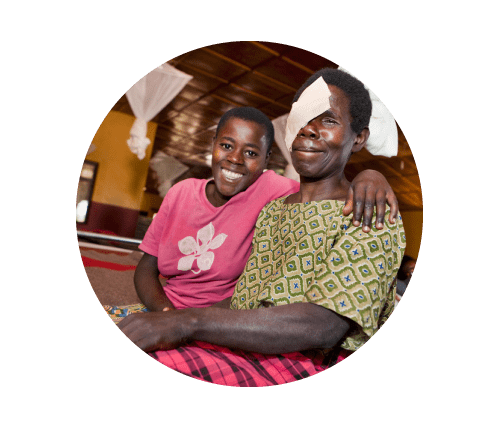
Give sight to an adult
With 52 euros you offer cataract surgery to an adult like Melanie.
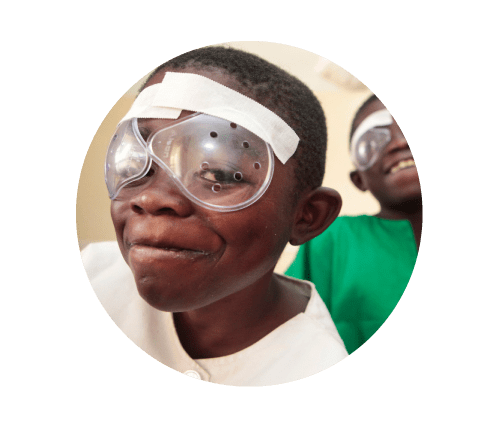
Give sight to a child
With 150 euro, you can restore the sight of a child like Saidi through cataract surgery under general anaesthesia.
